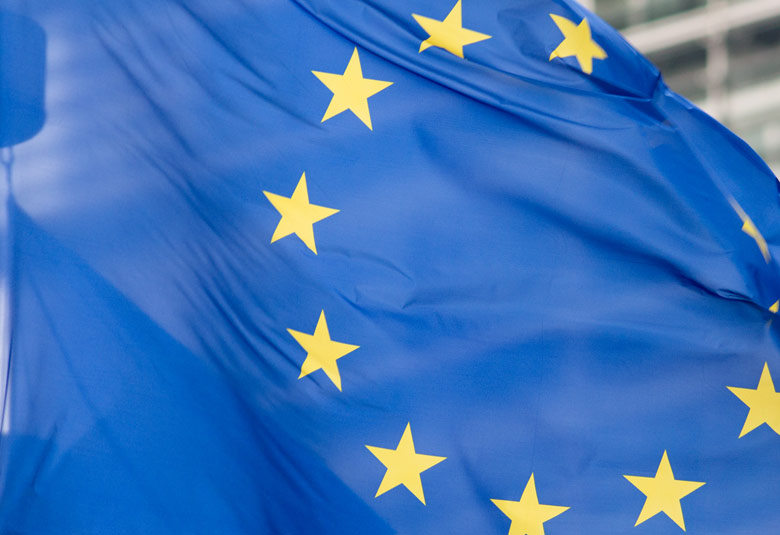Entry Certificates: The Widespread Risk of “Holding Out”
For nearly two years, Germany’s tax authorities have required Entry Certificates for deliveries carried out within the EU. But a recent study conducted by Germany’s “IT Onlinemagazin” reveals that as of late, more than one-third of companies using SAP in Germany have yet to implement an Entry Certificate solution. This kind of blind spot can come at a high price: Without an Entry Certificate, these deliveries are not VAT tax exempt, potentially resulting in considerable tax arrears following an audit by the tax authorities.
Companies using the SAP ERP application can significantly minimize their processing workload for Entry Certificates with an integrated IT solution like Mercoline’s M.SecureTrade Entry Certificate. Mechanical engineering company Carl Cloos Schweisstechnik has already profited from the substantial time-saving benefits of this innovative solution. Companies delivering goods within the EU are required to have the receipt of those goods confirmed by their customers. Since January 2014, confirmation via an Entry Certificate has been a prerequisite for VAT exemptions on deliveries within the EU. Germany’s tax authorities accept a variety of verification materials as Entry Certificates, including signed paper documents, emails, electronic documents and the track-&-trace data from courier services. But this still translates into a major workload increase for exporters. It follows that, according to a survey conducted by Germany’s “IT Onlinemagazin” in June of 2015, 39 percent of companies using SAP still have not implemented a solution for handling Entry Certificates. “Holding out”, however, is also not a solution: In the worst case scenario, this can lead to expensive tax arrears, particularly following an audit. “It's virtually impossible to compile all of the delivery documents for hundreds or thousands of deliveries from the past two or more years, then have customers send in the corresponding Entry Certificates”, warns Falko Richter from Berlin-based SAP solutions specialist Mercoline. “If worst comes to worst, companies unable to present Entry Certificates upon demand by the tax authorities face back VAT payments of 19 percent. That can quickly add up to several million euros”. Thanks to intelligent IT solutions, there is now an alternative to this risky waiting game and the complex manual processing of Entry Certificates. By largely automating the process, these solutions notably reduce the inherent complexity and time required while reliably protecting the company in the event of an audit by the German tax authorities.

Automatic Entry Certificate processing
The Mercoline M.SecureTrade Entry Certificate solution automates many of the processes involved in the SAP ERP application while documenting all the steps in a verifiable manner for audits. One of the ways it does this is by using the track-&-trace data from courier services or shipping companies. As soon as the recipient verifies receipt of the goods, Mercoline’s EDI services feed this information back into the exporter’s SAP system, where it is then used in the fully automated processing of the Entry Certificates. In Haiger, Germany, Mercoline customer Carl Cloos Schweisstechnik GmbH has reaped the benefits of this M.SecureTrade Entry Certificate feature, as well three of its additional options. One such option is used in the shipping of goods from Cloos headquarters to its subsidiary in Poland. When the goods are received, Cloos automatically receives Entry Certificates in the form of PDF documents with matching file names to the transport numbers in their SAP system. These are then stored in a special directory for the SAP ERP application. The M.SecureTrade Entry Certificate solution automatically recognizes that an Entry Certificate has been received and marks the process as closed. Another option specifically targets parcel services. With this option, M.SecureTrade Entry Certificate provides Carl Cloos with CSV files containing the delivery number from the SAP system, the tracking number of the specific CEP, the delivery date and the delivered quantity. These files allow M.SecureTrade Entry Certificate to automatically recognize that an Entry Certificate is present. M.SecureTrade Entry Certificate can also work with Mercoline’s M.SecureTrade web portal to automatically send recipients an email containing a link to confirm receipt of the goods. With this third option, confirmation is only a mouse click away.
IT solution offers “immense time savings”
Mercoline and Carl Cloos were able to implement the new solution within one week of setup. Carl Cloos's IT Applications Administrator Armin Gümpelein reveals, “We’ve been using M.SecureTrade Entry Certificate since March of 2015, and it has saved us an immense amount of time. Without this add-on to our SAP ERP application, an employee would be busy processing the Entry Certificates all day”. With M.SecureTrade Entry Certificate, many of the company’s Entry Certificate processes are now automated. Current status information is also readily available – a status monitor “traffic light” signals which confirmations have already been received and which ones still need to be followed up on. When the traffic light changes to green, this signifies that an Entry Certificate is present and automatically becomes stored in the SAP system. Mercoline also implemented a two-step dunning process for Cloos that reminds recipients about outstanding Entry Certificates in 14-day intervals. “This solution is efficient and reliable”, summarizes Gümpelein. “Another major benefit is its integration into the SAP ERP document flow. We've come to rely on this feature in the other Mercoline solutions we use, such as customs clearance with M.ATLAS”, he adds.